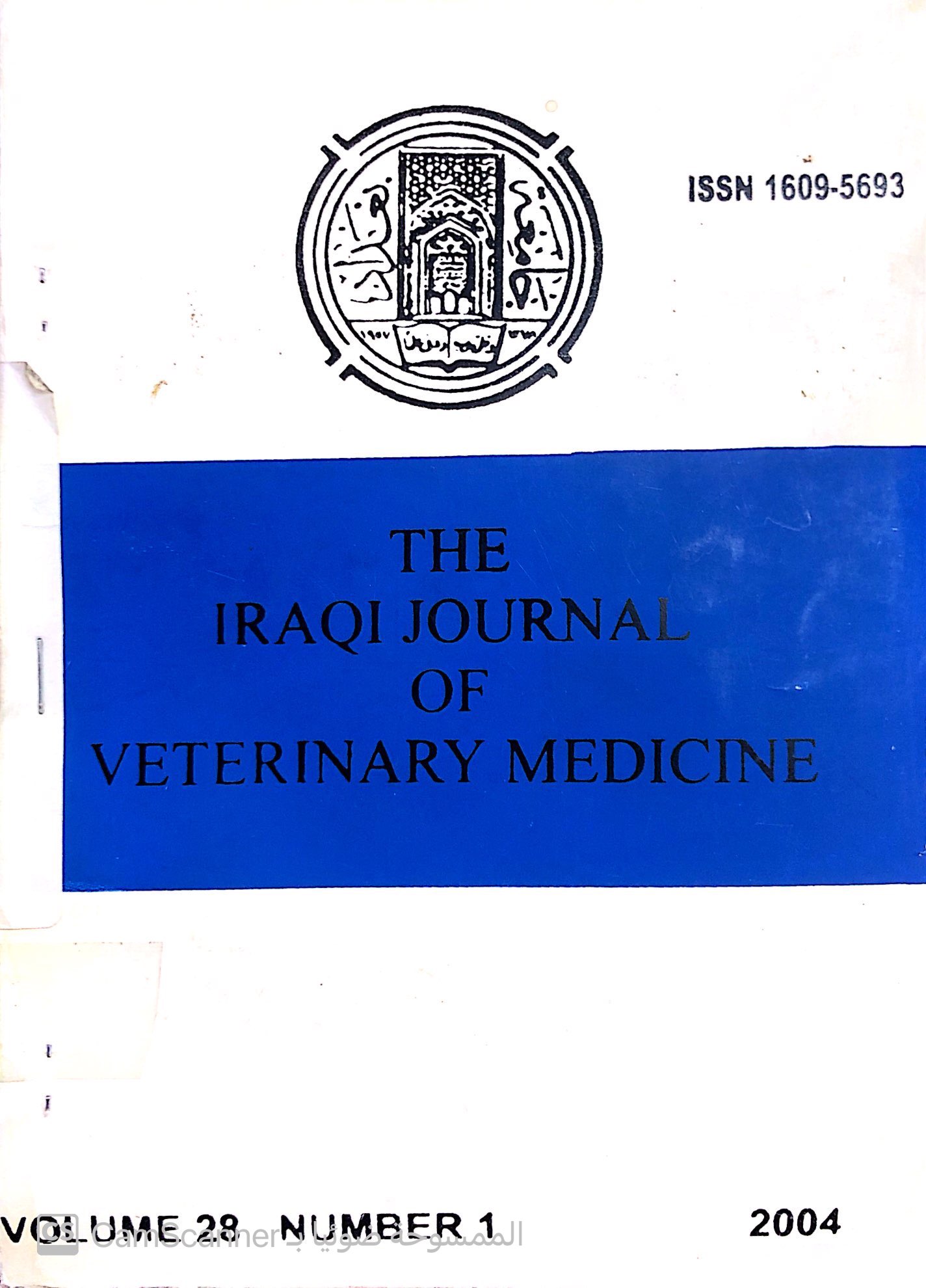Role of some psychrotrophic aerobic sporeforming bacteria in spoilage of raw milk
Main Article Content
Abstract
This study was planned to isolated and identify some psychrotrophic aerobic sporeforming bacteria from raw milk and determine the predomenant isolate.
Microbiological estimations were performed for (100) raw milk samples collected from four sources (filters, stations, bulk tanks and milk containers) and for the same samples after heat treatment at 80°C for (12) minutes and upon subsequent storage at (7)°C for 0,7,14 and 21 days.
The Aerobic plate count (APC) was determined and the total bacterial count were compared with each of the mesophilic sporeformer count (MSFC) at (0) & (7) days of storage & the psychrotrophic sporeformer count (PSFC) upon storage at (7)°C for 0,7,14 and 21 days. Positive relationship existed between the increase in (APC) before heat treatment & the increase in (MSFC) at (0) or (7) days or (PSFC) at 0,7,14 & 21 days of storage at 7°C. Immediately after heat treatment at (80)°C for 12 minutes 59% of the samples had psychrotrophic sporeformer counts of <10 cfu/ml, but after (21) days of storage at (7)°C, 79% of the samples had counts of > 109 cfu/ml.
Bacillus cereus and Bacillus mycoides were identified as the predominant psychrotrophic sporeformers in the heated milk, stored at 7°C.
The results confirmed that growth of heat-resistant psychrotrophicsporeforming organisms co-incide with spoilage of heated milk, and was a higher than of the normal pasteurization temperatures or longer time which enhanced the germination of these spores. psychrotrophic sporeformers have been shown to be responsible for such off-flavors (bitter, stale, rancid and putrid) of heated milk stored at (7)°C for (21) days, and sweet curdling observed in 70% of the samples in the forms of "buttons” at the bottom of the containers after (21) days of storage at (7)°C.
Most of the isolated psychrotrophic B cercus were able to produce porteinase, lipases and lecithinase enzymes beside the haemolysin.
It was concluded that the number of (PSFC) in raw milk
conditions prevailing sanitary
the depends upon apparently during production and upon time and temperature of milk storage before processing.
Downloads
Article Details
Section
How to Cite
Publication Dates
References
الغذائي، مترجم، مطبعة جامعة الموصل.
2. Bodyfelt, F. W. (1980). Heat resistant psychrotrophs affect quality of fluid milk. J. Dairy Record. 81(3): 96-98.
3. Mikolajcik, E. M. & Simon, N.T. (1978). Heat resistance psychrotrophic bacteria in raw milk and their growth at 70C. J. Food Protect. 41: 93-95.
4. Marth, E. H. (1978), Standard Methods for the examination of Dairy
products. 14th., Ed., American public Health Association: 416.
5. Kraft., A. A. (1992). Psychrotrophic Bacteria in Foods: Disease and Spoilage. CRC Press, INC. U.S.A.
6. Norris, J. R.; Ribbons D.W. (1969). Methods In Microbiology. Vol. 3B.Academic press INC. London. LTD., :163.
7. Buchanan, R.E. & Gibbons, (1984). Bergey's Manual of determinative bacteriology. 9th. Ed. The Williams & Wilkins Comp. Baltimore.
8. Mac Faddin, Jean, F. (1976). Biochemical Tests for Indentification of Medical Bacteria. The Williams & Wilkins Company. Baltimore. Md. U.S.A.
9. Cowan, S. T. and steel, K. J. (1979). Manual for the Identification of Medical Bacteria. 2nd. Ed. Combridge University press. London.
10.Parry, J. A.; Turnbull, P.C.B. & Gibson, J. R. (1983). A colour Atlas of Bacillus species, Wolfe Medical publications, Ltd. England.
11.Claus, D. and Berkeley, R.C.W. (1986). Genus Bacillus Chohn. 1972. In "Bergey's Manual of systematic Bacteriology”. (sneath, N. S. Mair; sharp, M. E. & Holt, J.G. Eds.).(vol.2). Williams and Wilkins, Baltimore. pp.1105-1139.
12.ISO/7932. (1993). Microbiology-General guidance for the enumeration of Bacillus cereus Colony-count technique at 30°C.
13. المحمد، نعیم ثاني والراوي، خاشع محمود ويونس، مؤيد احمد والمراني، وليد خضير
(1986). مبادئ الاحصاء مطابع دار الكتب للطباعة والنشر د
14.Te Giffel, M.C.; Beumer R.R, ; Granum, P. E.& Rombouts ,F.M.(1997). Isolation & Characterization of Bacillus cereus from pasteurized milk in household refrigerators in the Netherlans . Int. J. Food Microbiol. 34:307 - 318.17
15.Yadav, J.S.; Grover, S. & Batish, V. K. (1993). Dairy Microbiology. National Dairy Research Institute Kernal (Haryana), India. 1st., Ed. Metropolitan. New Delhi. India.
16.Banwart, G. J. (1979). Basic Food Microbiology. The Avi publishing Company, INC. Westport, Connecticut, U.S.A.
17.Jay, J. M. (1978). Modern Food Microbiology. 2nd. Ed., D. Van Nostrand Co. New York.
18.Fennema, Owen, R. (1976). Principles of Food Science. Part 1, Marcel Dekker, INC. New Uork. U.S.A.
19.Frazier, W.C. and Westhoff, D.C. (1988). Food Microbiology. 4th. Ed. McGraw-Hill Book Co. New York.
20.Yadav, J.S.; Grover, S. & Batish, V. K. (1993). Dairy Microbiology. National Dairy Research Institute Kernal (Haryana), India. Ist., Ed. Metropolitan. New Delhi. India.
21. Van Netten , P.; Van demoosdijk , A.; Van Hoensel , P.; Mossel, A. & Perales , I. (1990). Psychrotrophic strain of Bacillus cereus producing enterotoxin . J. Appl. Bact. 69 (1): 73 – 79




